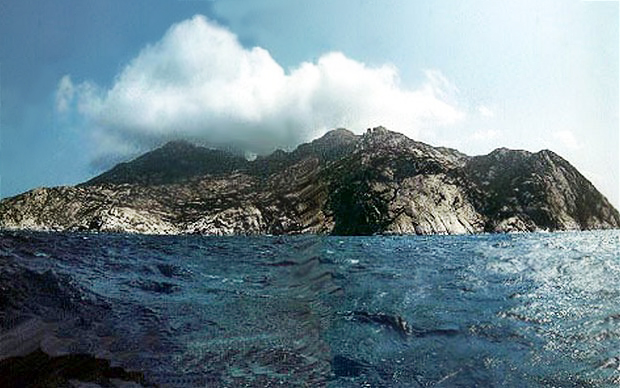Most readers have heard the name, the Count of Monte Cristo and some are familiar with the story. The Count not only took the island’s name, but he returned to France with a plundered treasure and a taste for vengeance. Today, the Island of Montecristo is most famous for its place in the novel, rather than for its actual location in the Tuscan Archipelago. Many times, more people will read the book or watch the movies than visit the island, which is only open to tourists twice a year and under specific conditions. Visitors can forget about finding treasure, they will be lucky to find any amenities.
When French nobleman Edmond Dantès is falsely accused of treason in Alexandre Dumas’ novel “The Count of Monte Cristo,” he is imprisoned on a remote island off Marseille. He makes a fortuitous escape and soon after discovers treasure on a small Italian island. As the plot unfolds, Dantès takes the title Count of Monte Cristo and returns to Paris to seek revenge on those who falsely accused him.
The story was pure fiction, although the island that catapulted Dantès to success is not. Situated approximately 40 miles from Porto Santo Stefano in Tuscany, on Italy’s Tyrrhenian coast, the less than six square-mile island, of which Elba is the main island, remains bathed in mystery, primarily because it is out of bounds to most tourists.
Rocky and steep, it rises to over 2,000 feet in height and has three peaks. The last time more than a handful of people inhabited the island was in 1971, when the Italian Navy garrison on the island was moved. In that year, Montecristo was designated a nature sanctuary. Nowadays, the island has only two permanent human inhabitants, both are nature reserve keepers.
A maximum of 1,000 visitors per year are permitted to visit the island, a quota set by the European Union to protect the island’s environment. Six hundred of those places are reserved for students. This means that the waiting list to be one of the lucky 400 adults who see Montecristo can be very long. Additionally, the island is not easy to reach. It is not served by scheduled ferries and therefore those who get authorization to visit have to independently charter a boat suitable to cover the distance from the mainland. Plus, any individual who is eager to visit Montecristo may have to convince 39 other people to join them, since groups of at least 40 are the minimum. If that isn’t enough, before you organize transportation, you will need to get authorization to visit from the local branch of the police. Tours take place only on three existing trails, each of which is very challenging, due to the steep terrain.
If you are still intent on visiting what is undoubtedly Italy’s toughest destination, requests for authorization to visit must be received by January 31 for that calendar year. There are also many regulations once you arrive. Navigation around the island is not permitted, so when you make landfall, that’s it. Bathing is not allowed, so you can leave your swimsuit at home, plus there are no hotels on the island, although there are numerous structures. There is an abandoned monastery, the Cave of St. Mamiliano and a military fortress on the island’s highest peak. If none of this deters you, Montecristo is open to visitors twice a year – between April 1 and April 15 and August 31 and October 31.
So what makes all of this inconvenience worth a visit? The five-million-year-old island is pristine and unspoiled by the hand of man. The lack of human activity has made Montecristo a favorite with all kinds of marine species, including whales; therefore, Montecristo offers a chance to see nature in its purest form. That is not to say that the island has always been uninhabited. As far back as the Etruscans, the island was used for wood to fire furnaces to smelt iron in nearby Elba and that continued through the era of the Roman Empire.
Around the middle of the fifth century AD, the caves of the island became home to several hermit monks escaping from the Vandals of Genseric. The most important of the monks was St. Mamilian. They christened the island “Mons Christi,” from which the modern name is derived. At the beginning of the seventh century, Pope Gregory the Great assigned them to the monastic rule of the Benedictines. In this period, the Monastery of St. Mamilian was founded. As a result of donations to the Church, its wealth became legendary and a chapel was built in the St. Mamiliano Cave where the saint had lived. In 1216, the monks joined the order of the Camaldolese. Thanks to the donations of several noble families, the monastery became both rich and powerful, giving rise to the legend of treasure hidden on the island.
If you decide that a visit to Montecristo is too much of a bother, tourists can still visit other islands in the Tuscan Archipelago. Elba, Giglio, Capraia, Pianosa, Gorgosa and Giannutri are all popular destinations where history and natural landscapes meet.
Pianosa, the neighboring island north of Montecristo, was a maximum security facility until 1999, when the prison was closed and the island was opened to the public. Pianosa’s role as an incarceration center throughout the 19th and 20th centuries inadvertently helped to protect the island’s ecosystem and today it is a haven for divers and snorkelers. Just a few feet under the sea, divers can encounter huge groupers, enormous lobsters, scary moray eels and a thousand brilliantly-colored Mediterranean species of fish. A veritable tourist mecca compared to Montecristo, a maximum of 250 tourists per day are allowed to visit Pianosa.
For those who believe that they can slip in and visit Montecristo without going through a mountain of red tape, chances are that you will be caught, at least by security cameras. They are one of the only modern elements associated with the island.




